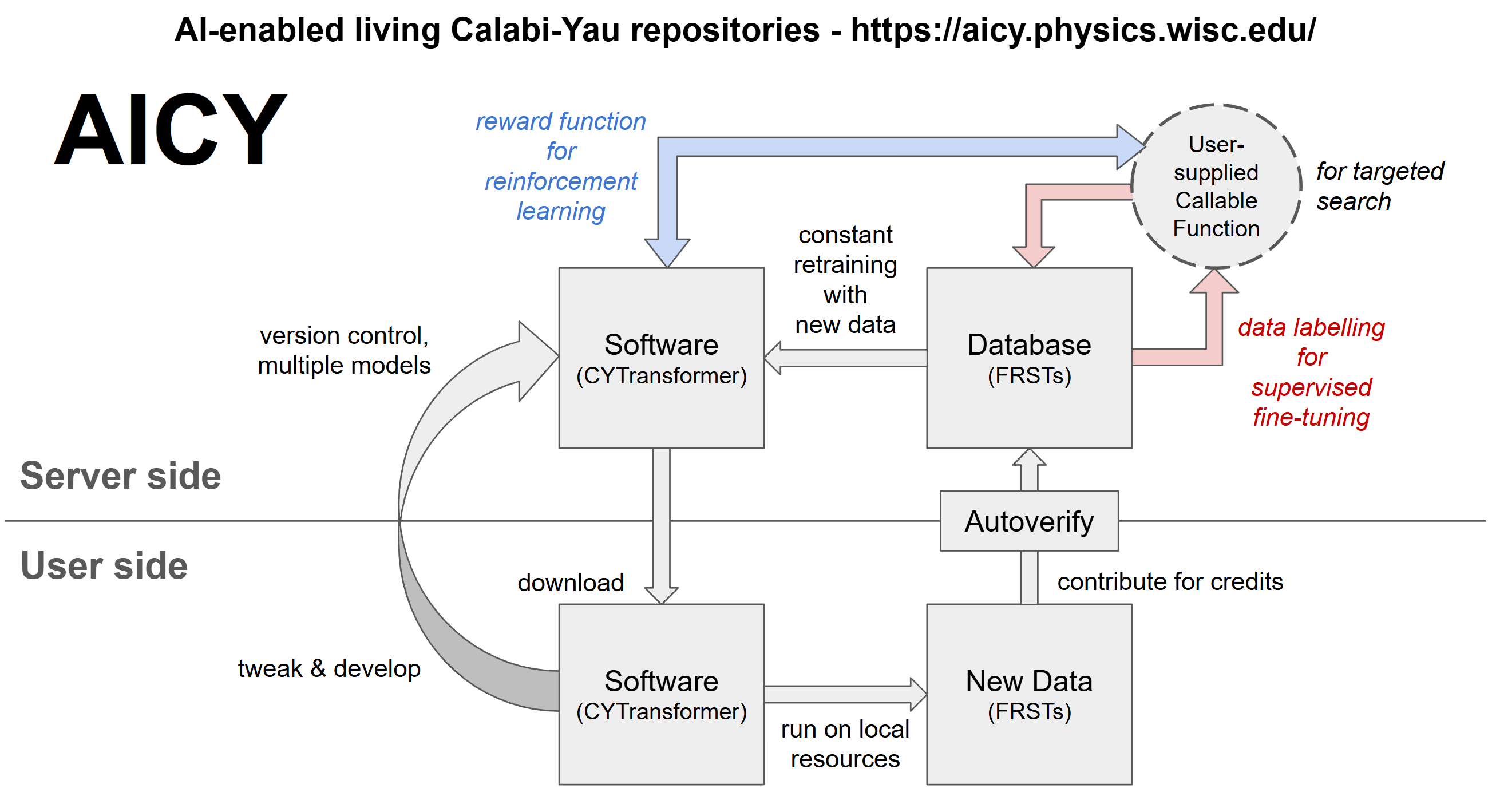First proposed in this work, AICY is envisioned as a community-driven software and data ecosystem for navigating and cataloging the landscape of Calabi-Yau manifolds, serving string theorists, geometers, and the broader scientific community.

AICY consists of two closely interacting components: the software repository and the data repository. These components update and reinforce one another continuously, both on the server side and through user contributions. The software repository includes learning-based tools such as the CYTransformer presented in this work. Users can download pretrained models, adapt or extend them, and contribute enhanced versions back to AICY. These tools can also be run locally for practical applications, such as generating FRSTs or Calabi-Yau manifolds for specific research tasks. The data repository is open to community submissions via an automated interface. For example, users can submit candidate triangulations generated using AICY's tools, which are automatically validated upon upload. All contributors will be properly credited for any software or data they provide.
Through this collaborative pipeline, both repositories remain "living", improving continuously with community input. On the server side, we support periodic retraining of the learning-based tools on the growing dataset, enabling self-improving models like CYTransformer. A key feature AICY will support is targeted Calabi-Yau search.
Powered by machine learning and guided by fundamental physics, AICY evolves with the community, for the community. AICY is expected to launch in late 2025, and we invite you to be a part of it.
Sign up for updates & beta access
Acknowledgements. We thank our collaborators François Charton and Charles Arnal at Meta for joining the project. They contribute valuable AI expertise and computational resources to help bring AICY forward.